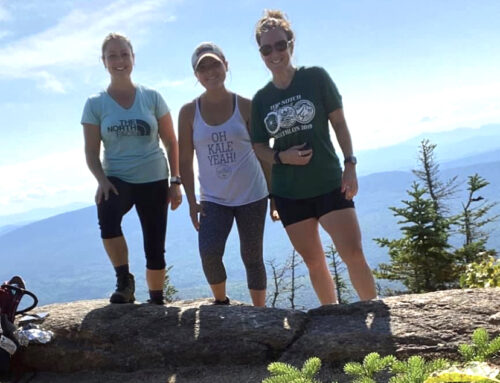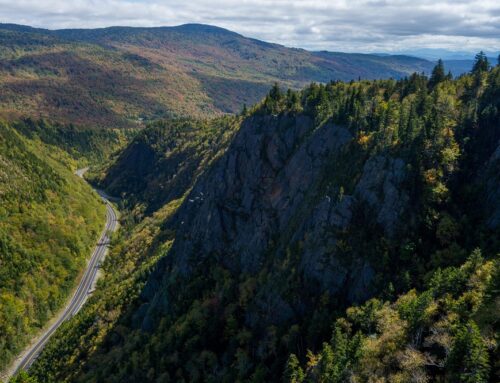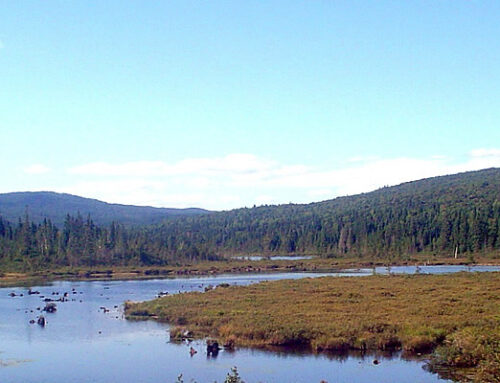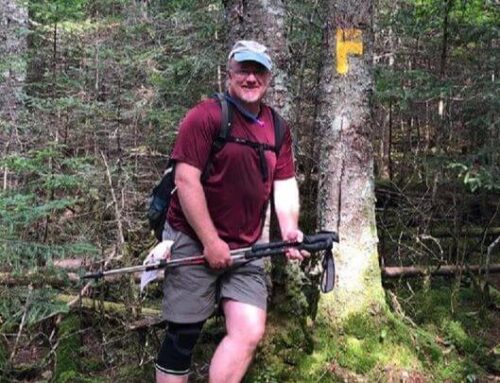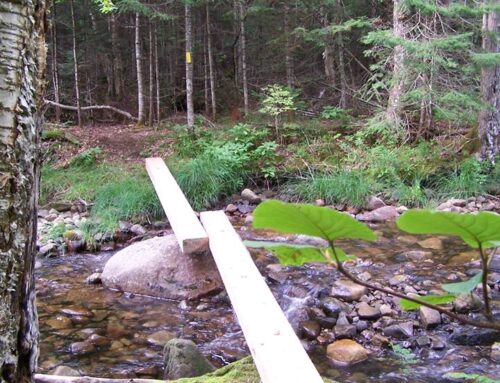By Kim Nilsen
The Cohos Trail is about 170 miles in length. That’s a lot of terrain to maintain annually. Hundreds hike some or all of the pathway each year. If you are one of those many, you may be able to help the Cohos Trail volunteer trail adopters and crews by doing simple maintenance work on the trails anytime you are out on the trail, even if just for a few minutes. Here are some simple maintenance tasks you could perform by hand or with a simple nonpowered tool or two while you are hiking.
REPORT: If you see a large tree down in the trail or other problem, please report it by contacting us through our www.cohostrail.org website or posting to Friends of the Cohos Trail on Facebook. We can’t remove the object if we don’t hear about it. So be our eyes and ears when you are out there in the park.
FLICK STICK: What is a flick stick and what is it used for? A flick stick is simply a stout stick or a hiking pole that’s three feet long that you use to simply flick forest debris off the trail without having to bend over and pick the debris off the trail. That’s it. Use one hand for small items, two for bigger items. Only remove what you can without straining. Just this simple action will improve the trail underfoot.
ROTATE AND SLIDE: Sometimes larger branches and smaller rooted trees come down in the trail where both ends of the wood are no longer attached to a stump or to the ground. That means the wood, if it is light enough to handle, can be picked up and put to one side, can be rotated out of the trail, or can be slid down a bank or over rocks to get the debris out of the trail. If you must strain to move a branch or log, don’t. We’ll take care of it.
CLIPPING: Bring a hand clipper or branch lopper in with you and do some simple clipping to ensure that a trail has a four-foot-wide right of way. Please do not leave “pungy sticks” sticking out of trees or brush. Trim next to the trunk, always. And if you clip off growth at ground level, leave no stump at all. Cut flush to the ground at all times. This practice ensures that people don’t trip over your handiwork.
HAND SAW: Some folks do like to use a saw to cut smaller logs down in the trail. That’s fine, but you may NOT use a powered saw of any kind. And you may not cut living trees. Be sure your hand saw is sharp to make your work faster and easier. And if you get your saw hung up and can’t remove it, try finding a long dry hefty branch and use it as a lever to lift the log a bit to free the saw.
LEAVE NOTHING: Once you have cut something, don’t leave the material in the trail, be it a branch, leaves, bark, or section of tree. Leave the trail clean when you go, and you will have done a fine job and made the hiking experience better for all.
CLEANING WATERBARS: Most folks don’t realize how critical waterbars and culverts are to the life of trails. They have to be cleaned yearly. If you don’t want to haul tools around, find a good stout stick and remove debris from just one waterbar or two and their ditches and unplug the mouth of a culvert or two. Just that alone would be an immense help to us at The Cohos Trail Association.
